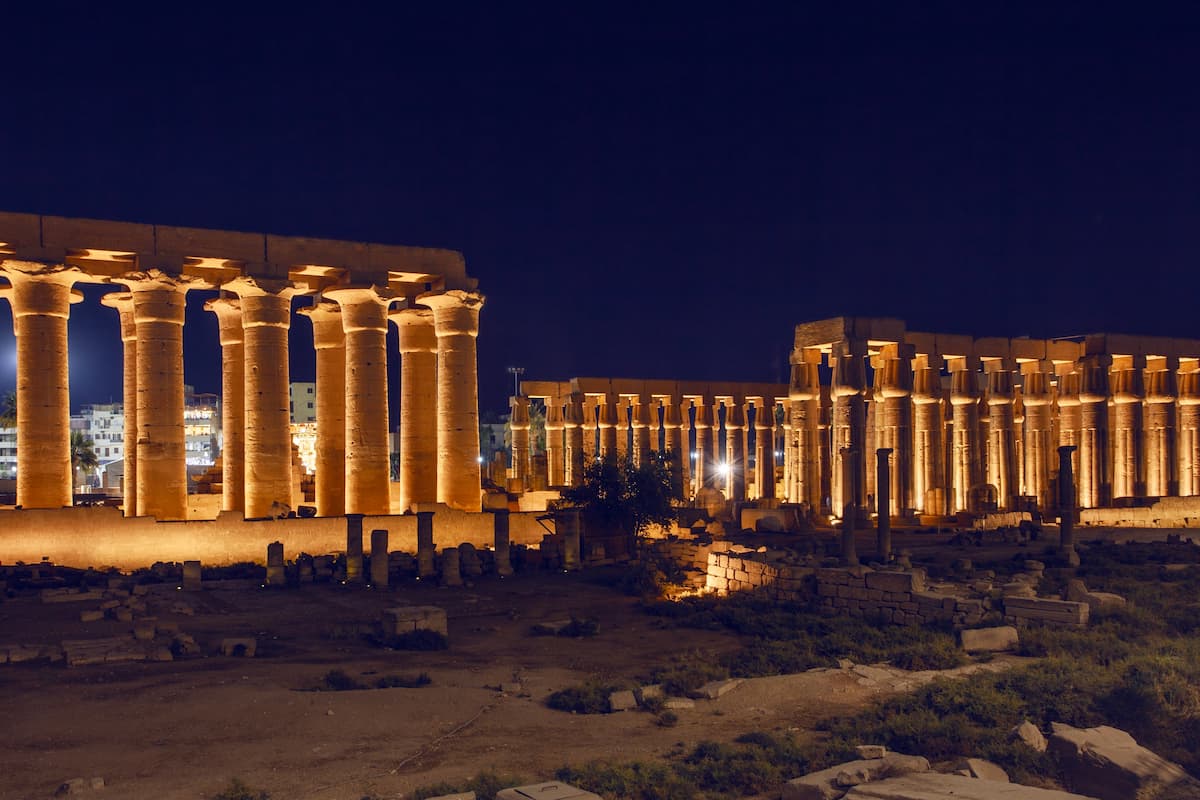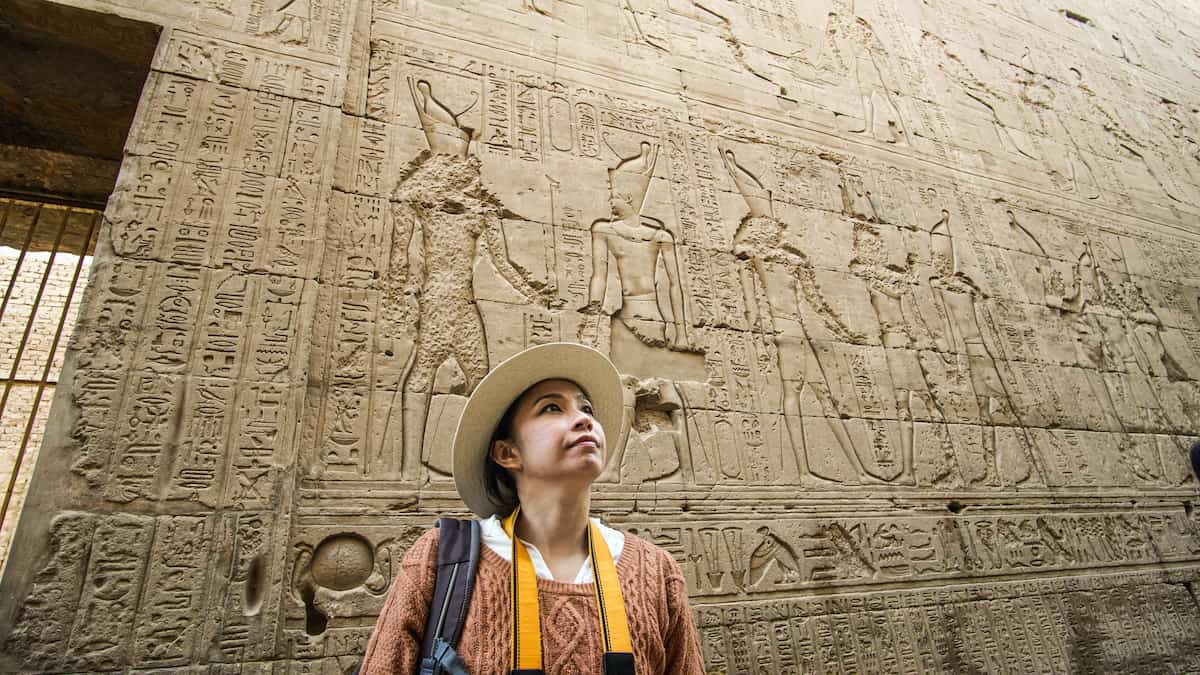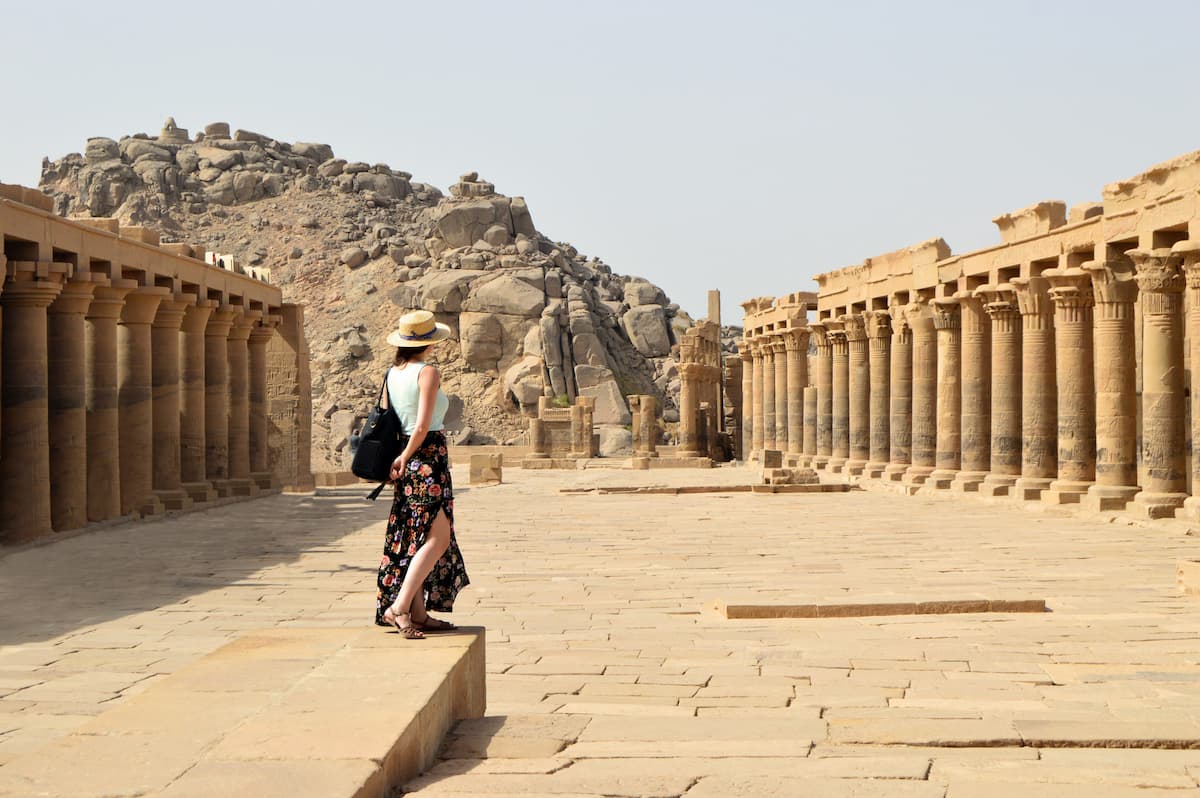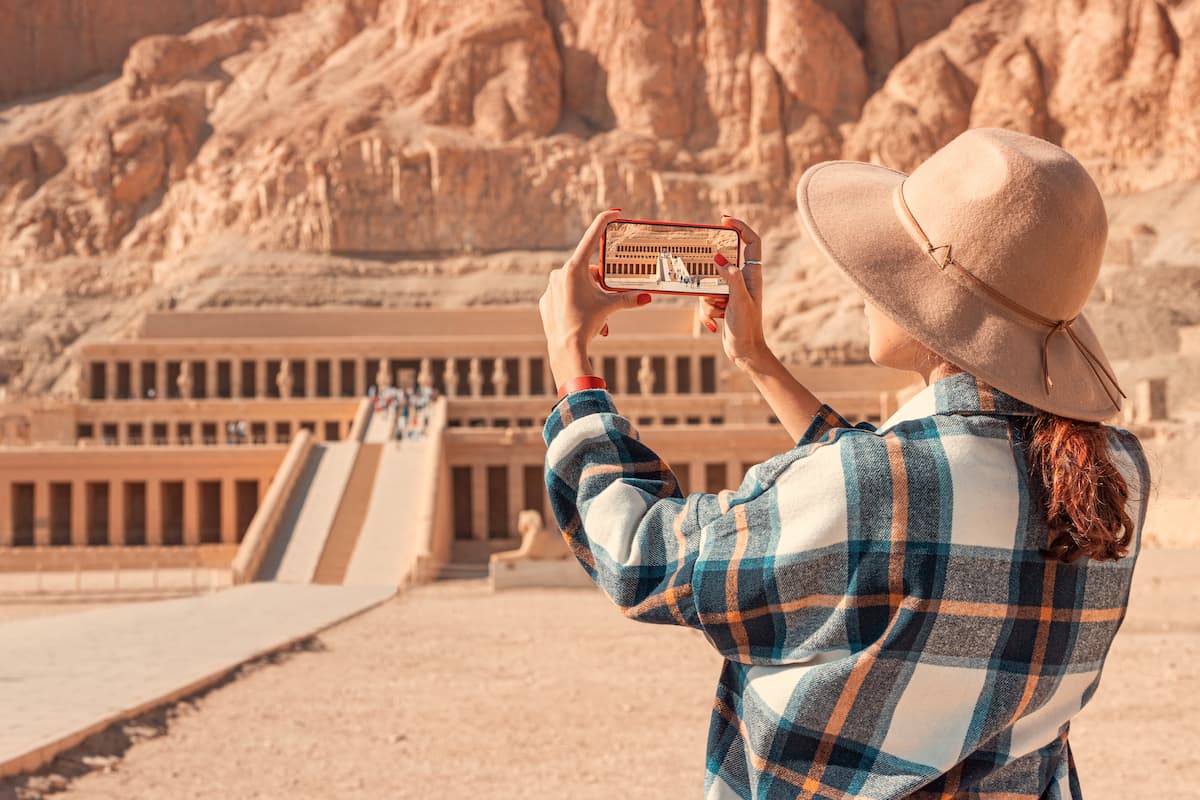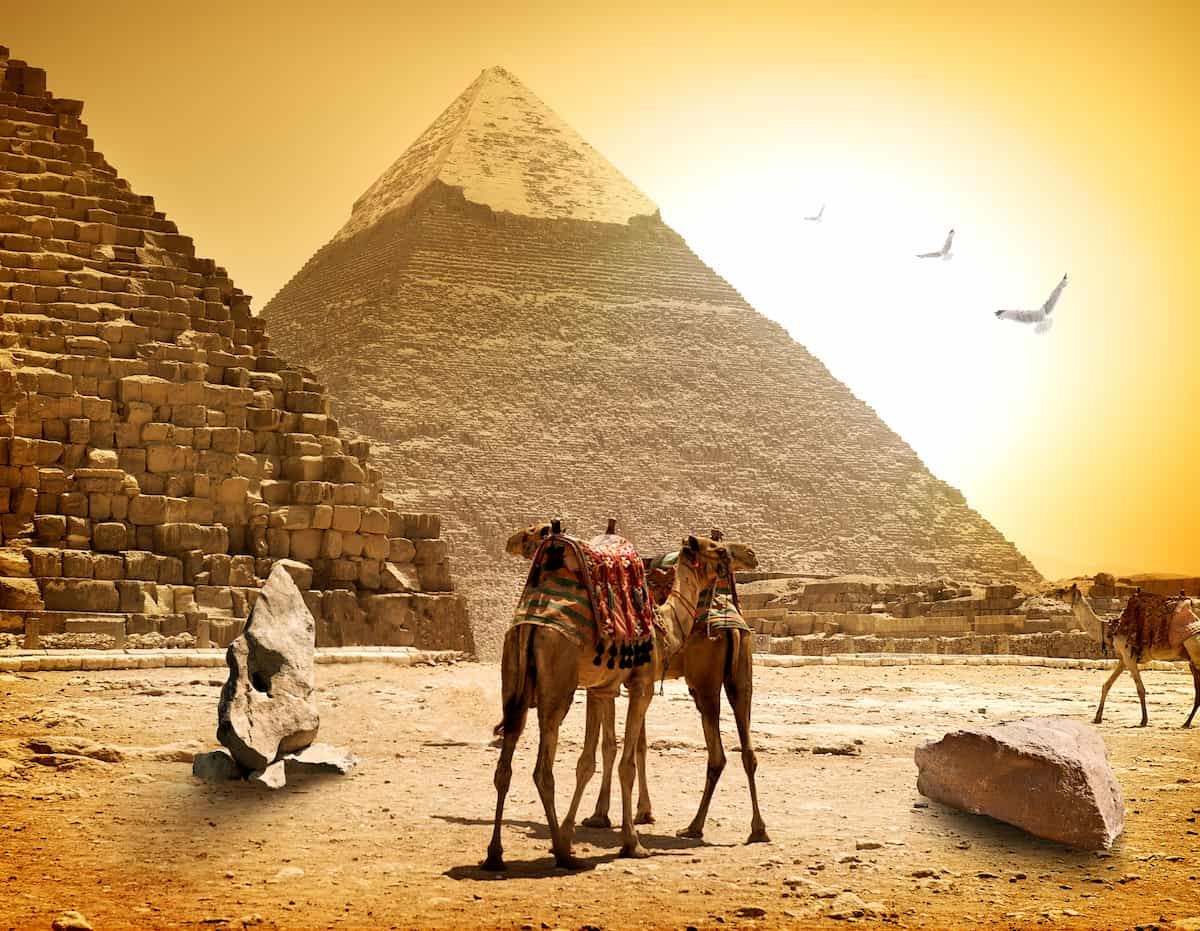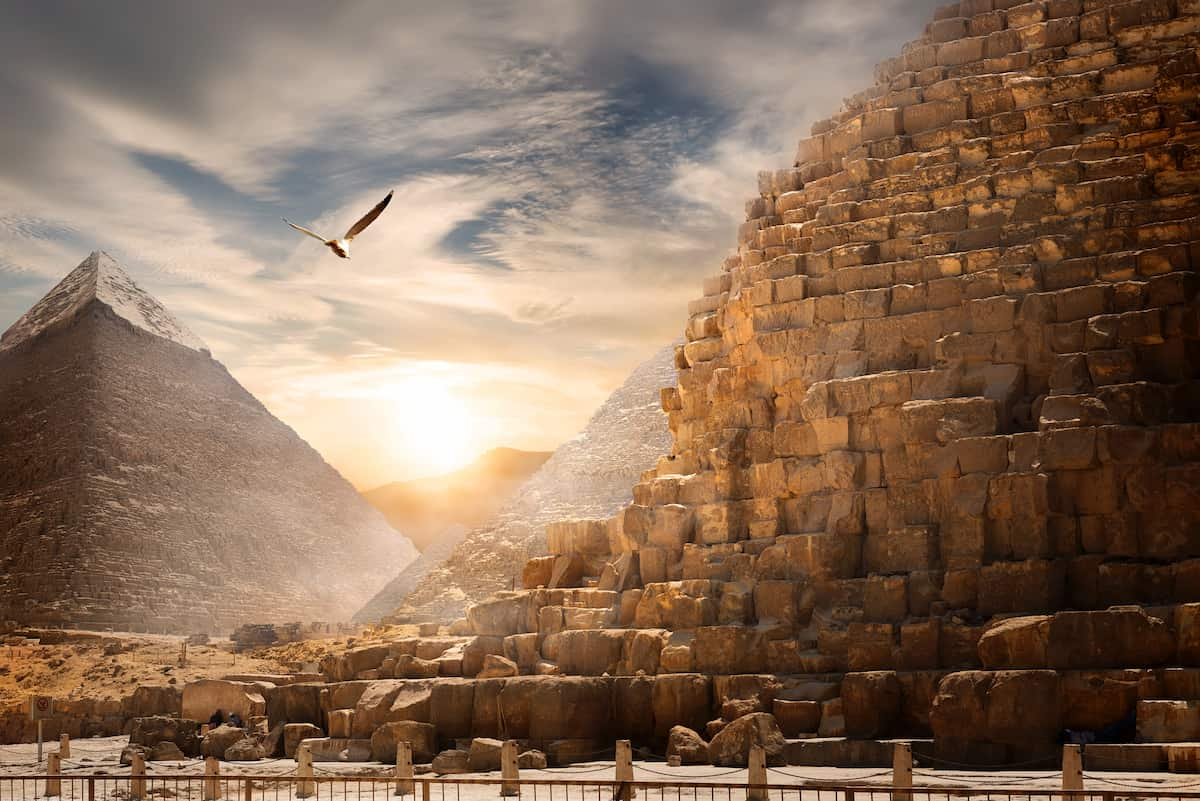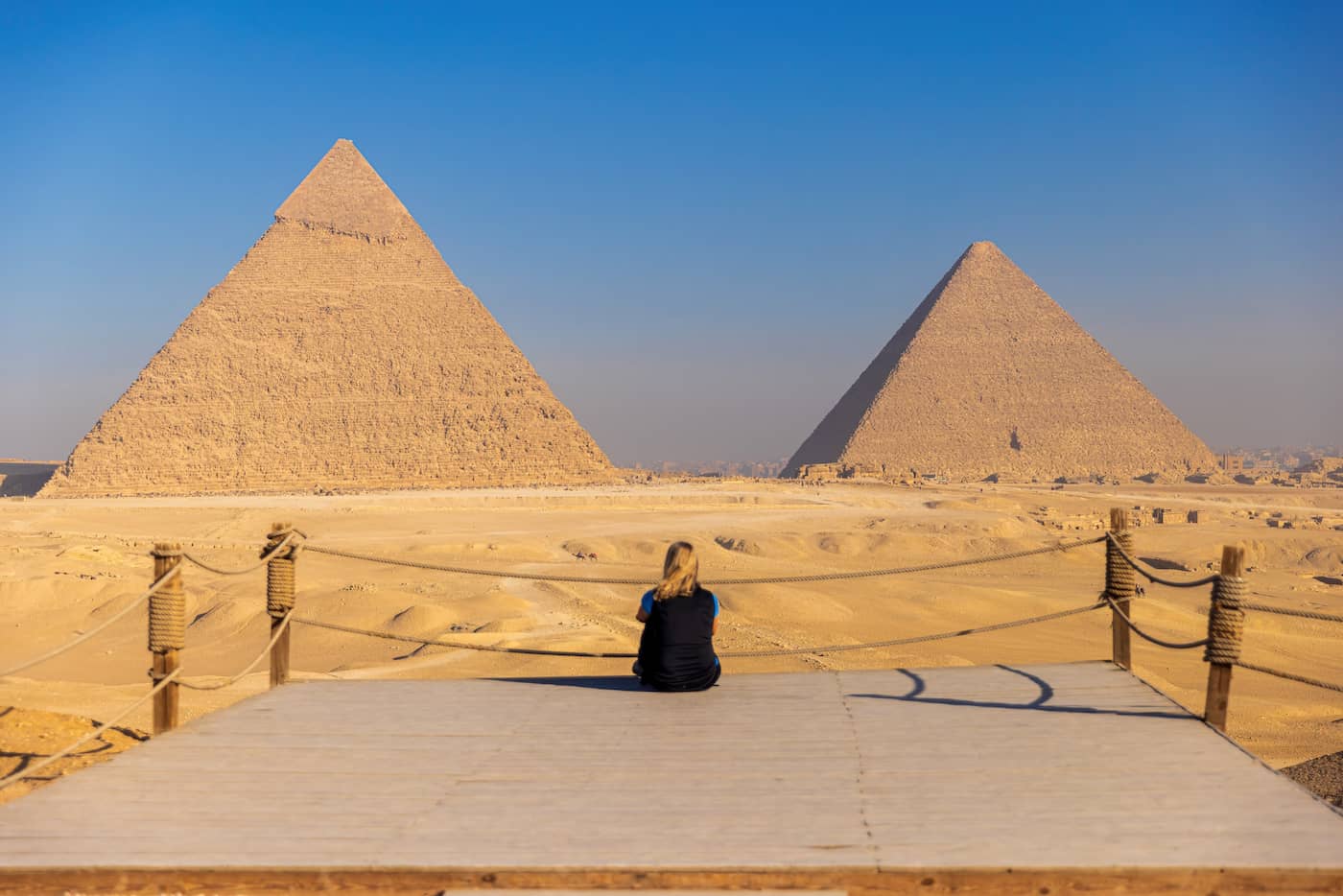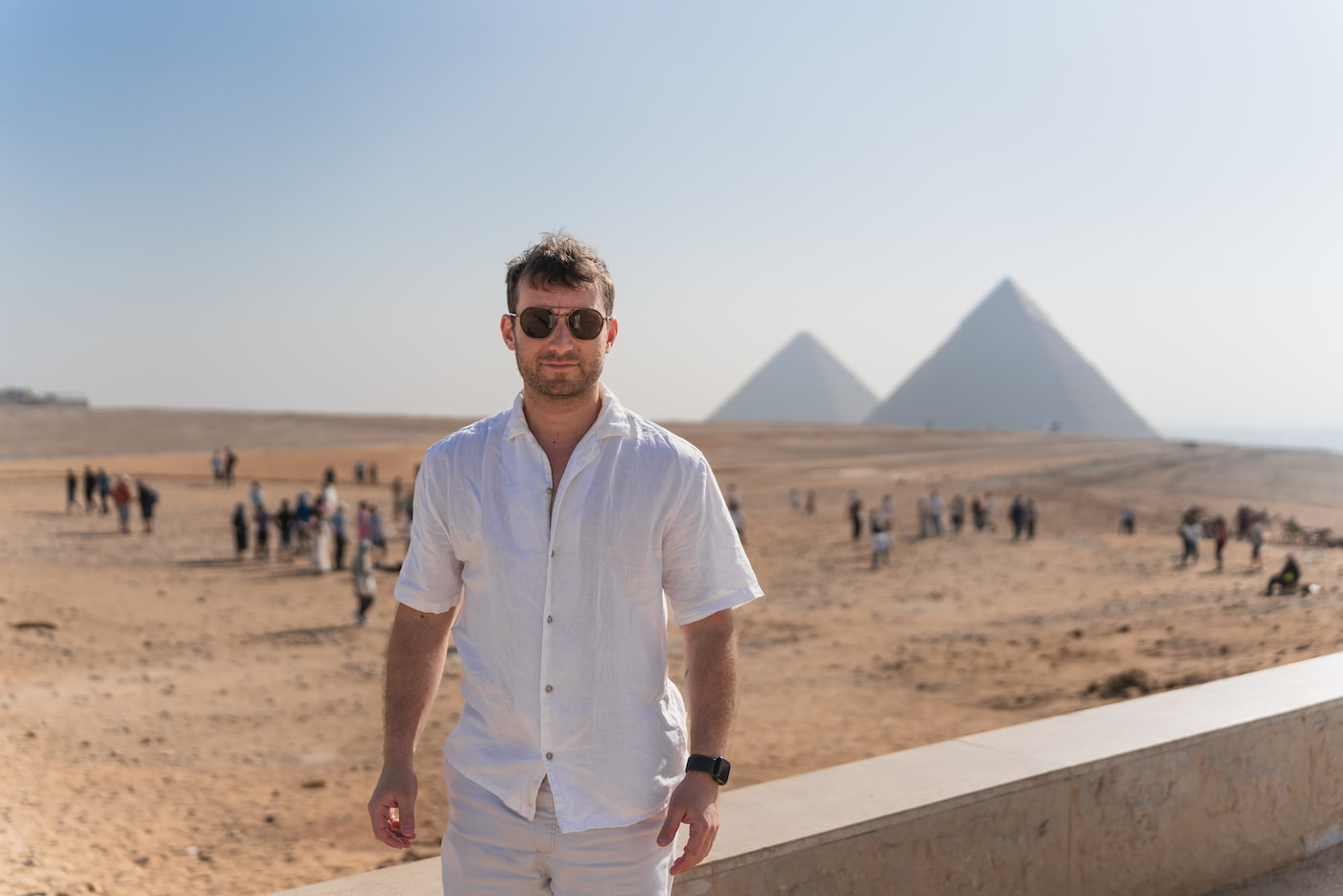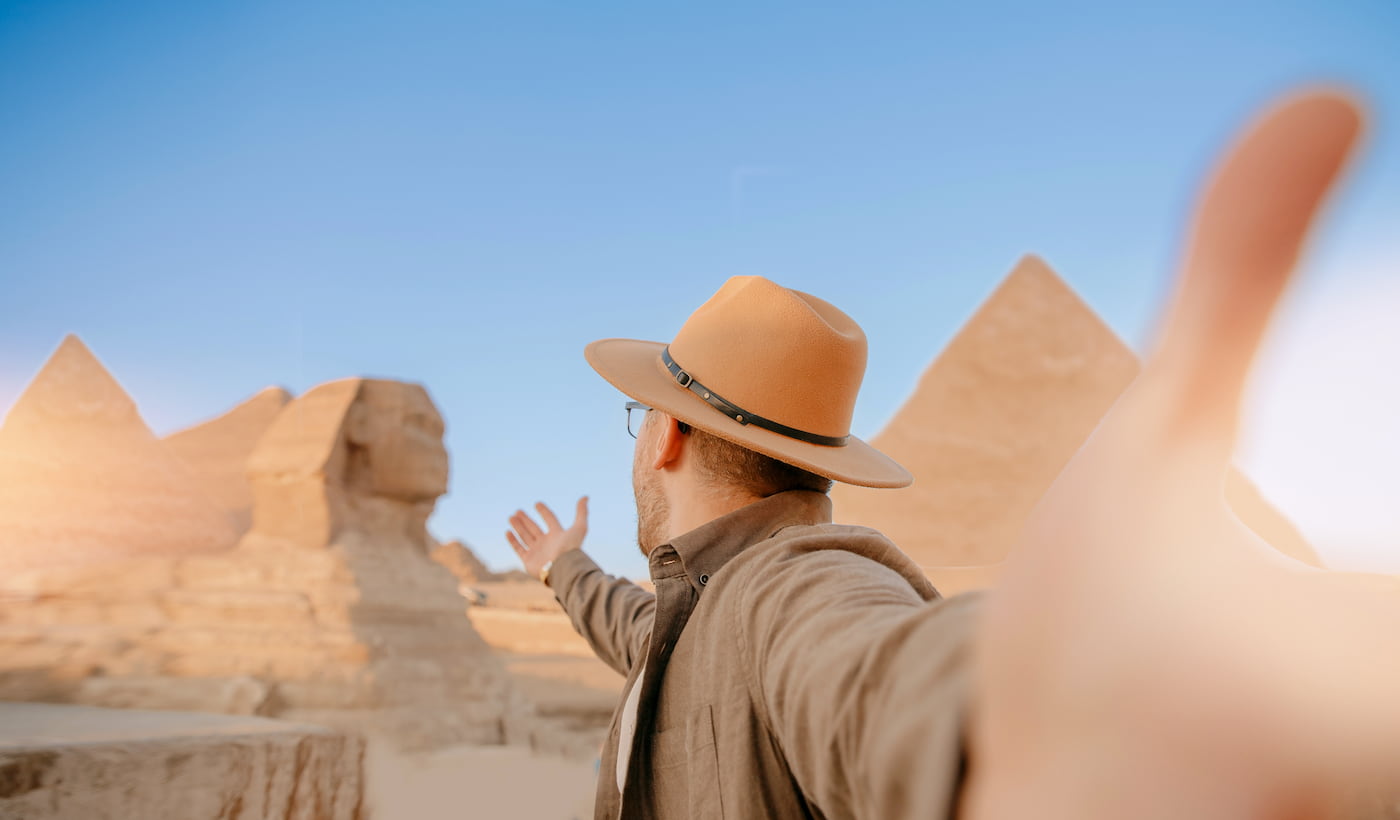Luxor Cachette: A Lost Legacy Beneath Luxor
Right there, in the centre of Luxor, is the exceptional beauty of the ancient hieroglyphs. That which is written on the columned walls speaks loudly of the glory of the ancient kingdom of Egypt. And just there, beneath the very surface, emerged a surprise as much as archaeological speculation was concerned, which nobody had ever anticipated. The Luxor cachette story and facts. An unexpected discovery of a Luxor cachette was indeed made in 1989 in the Luxor temple during a restoration exercise, since Mohamed el-Saghir, the Egyptian archaeologist in charge of the activity, made a startling revelation. He discovered a hidden underground chamber at the temple that had not seen the light of day for generations, packed with life-size statues of gods and goddesses of Egypt, pharaohs, and other religious figures.
Never heard that the Luxor cachette story has a great story, this secret gathering, known today as the Luxor Cachette, of a god-like statue is but one of the jewels of the 20th-century historical architectural humanity. In particular for any individual interested in anomalies such as those we shall narrate in this article, the collection is one of more quest for adventure than revelation of immense riches, appreciation and protection of one’s gods, that’s unexplainable and unspoken, how many statues are covered up by sand for them to remain that way, untouched.
Get ready to unearth more of the buried word as we enter the realm of the abandoned heritage of Egypt in the lines preceding the paragraph.
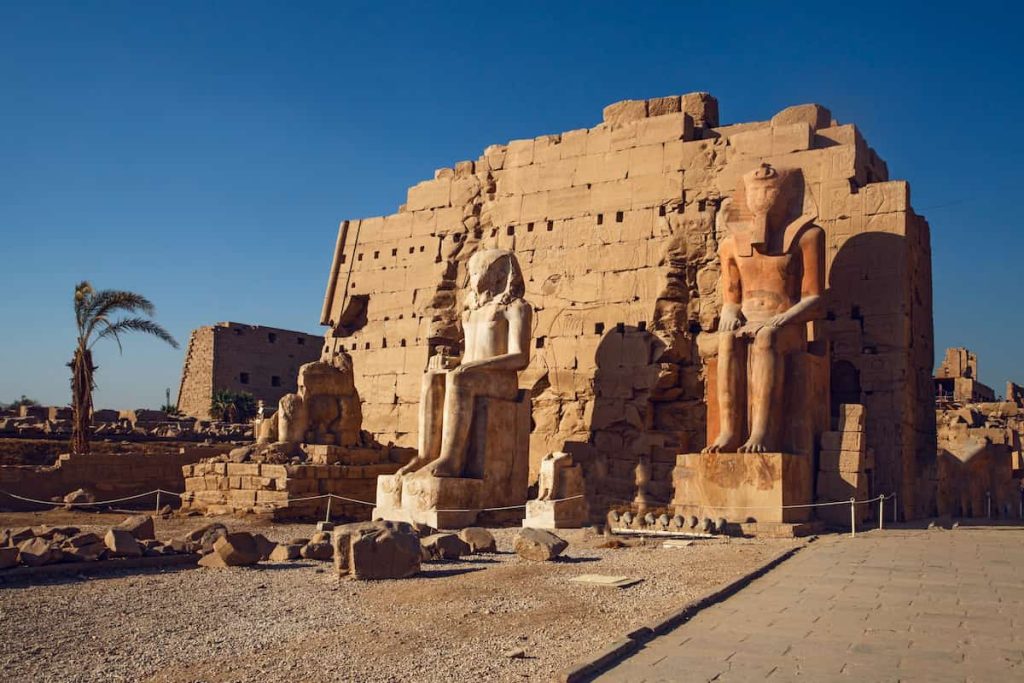
2. Unearthing the Past: The Discovery of the Luxor Cachette
An Unexpected World Revealed Through Restoration
In 1989, work to restore the Luxor temple was already underway, thanks to the efforts of Egyptian archaeologist Mohamed el-Saghir. The project aimed to replace, overhaul, and support the existing hubs around the Colonnade of Amenhotep III, as it was built more than 3000 years ago. What was intended to reconstruct the temple resulted in one of the most historic preservation efforts in contemporary Egypt.
As workers cut through layers of earth and ancient tiles, they noticed something about the consistency of the soil. A newly illuminated face, a smooth stone skin, was what changed everything. It was the top of the statue, embedded in a thick layer of earth and undamaged for centuries, the expression on its face still serene and regal.
One Statue Became Many
As the workers continued to dig the area, little by little, this location began to be something more than just a chance find. First one statue turned, then another version appeared, and then another, each of which was discovered to be set very strategically on the ground, one below the other. Within the space of a few days, the workers had revealed an entire hidden ensemble of statues, 26 in total, to be precise. Among them, some were not only incomplete, but others were in excellent condition. Pharaohs, priests, and other divine beings in human and animal shapes have been emotionlessly frozen in granite, alabaster, quartzite, purple, and tan sandstone.
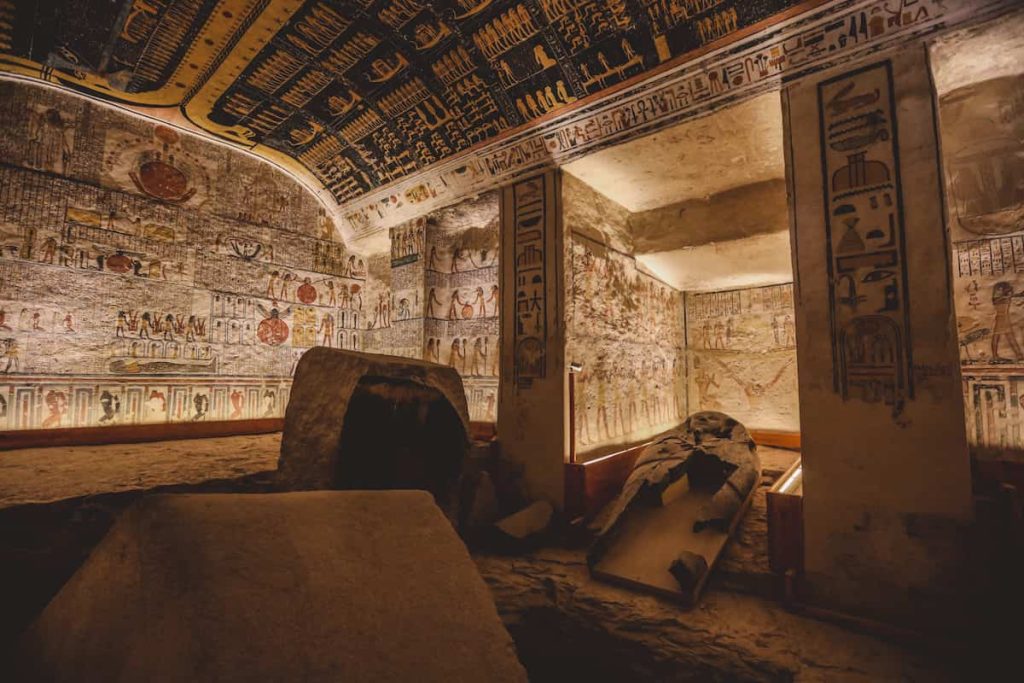
These sculptures went beyond being figures of artistic worth; they were representations of a supreme being. Viewing them through that context, one could ascertain that they were purposefully buried and positioned near the sacred door of the site. There was a psychological reason for it, as such measures were taken to protect the very idols from being destroyed and anything of that sort, as that was not meant to produce destruction but rather to maintain the structure of it.
The tomb of Tutankhamun is remarked as one of the few sites to host whole tombs with all their treasures. It also provided information about the social status, religious beliefs, and economic activity of Tutankhamun in history.
3. Who Were the Figures in the Cachette?
In comparison to a partial rubble in the mud, the hidden Luxor Cachette was more of a sacred sculpture. All these statues had facial features and images; each had a title depicting its official divine characteristics, and together they formed such a dignified assembly, in this case, the spiritual and royal history of Egypt.
A Selection Of The Oddest And The Most Beautiful Ones
The total number of 26 objects recovered in the Cachette included both the pharaohs with their deities, priests, and animals, the representative of which was the so-called Valerian snake. It was not only the decor, it was a cult image or a specific item of the temple, which was working in the sanctuary of the Luxor temple.
Any of these may include
- Amenhotep III – a builder of temples.
- Tutankhamun – a mysterious young pharaoh who symbolizes a mystery
- Horemheb – known as a general who became a pharaoh and restored the old worship after Amarna was thrown out.
- Amun-Ra was the principal deity of Thebes. He was also known as the ruler of deities and was at the heart of worship amongst the people of the New Kingdom.
- Mut – the goddess who was regarded as the great mother and wife of Amun, and whose biological attributes suggest the same subject matter as a regular temple built in her name.
The moon god, who was identified otherwise as the son of Amun and Mut, is called Khonsu, as he completes the triad, originally belonging to the tablets in Thebes, where it was initially created.
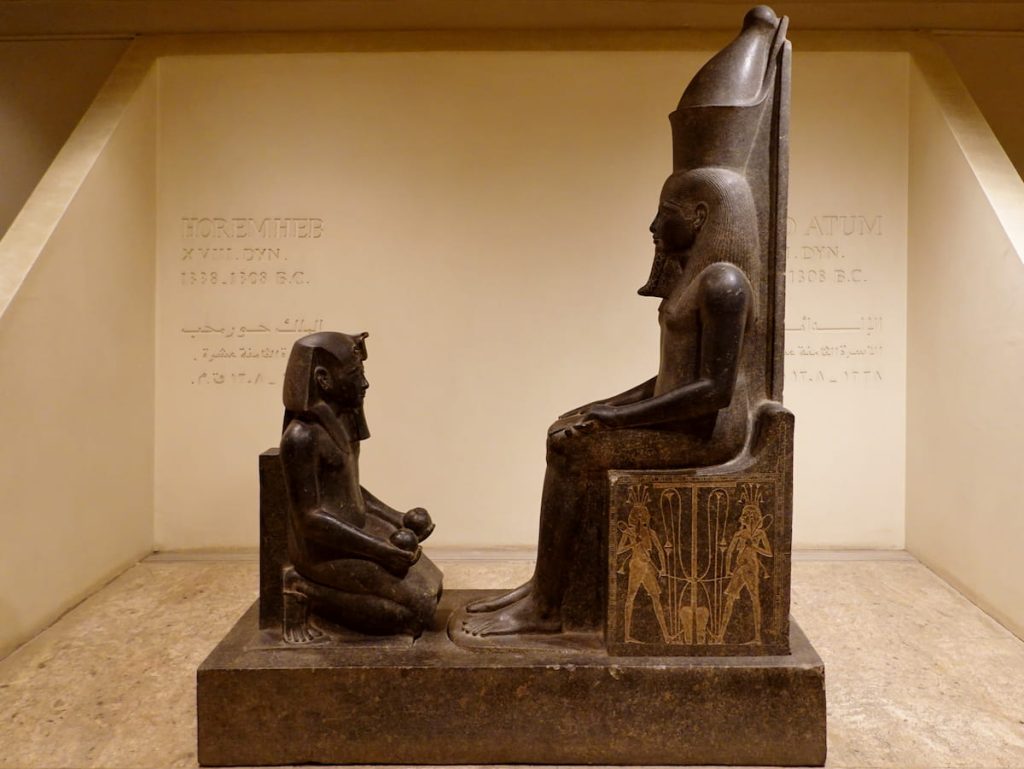
Several sculptures were posed in a kneeling manner as they lifted sets of sacred emblems towards the god. Other figures are displayed in full regalia in upright standing positions. Every such figure became a narration of a different story about oneself and about devotion, about a union with the divine within the confines of a certain society.
They form a very fitting homage to the way the people of ancient Egypt considered the pieces of art as the animated manifestation of their spirituality and influence. The Luxor Cachette was not just an enclosed space but also the shrine of the gods in stone, awaiting reincarnation.
4. Why Were the Statues Buried?
When archaeologists uncovered the Luxor Cachette, one question immediately emerged: why would such finely crafted, sacred statues be buried beneath the temple floor? The answer isn’t fully known, but scholars have proposed several compelling theories that speak to the complex intersection of religion, politics, and preservation in ancient Egypt.
Safeguarding in the Form of Symbolical Ritual
Among the major assumptions that the critics have had to offer is the assertion that the burial was a purposeful as well as a sacred act that was meant to shield these items of reverence during some precarious period. Not only did mighty images of pharaohs and other gods not get abandoned or knocked off, but they were also carefully located, inset, and fixed to the ground within a temple square, connoting great respect and a sense of commitment to the same.
The process of hiding objects like these may have had several layers of meaning within the culture of ancient Egypt. One example of this is that establishments would bury rather than lose the images in the event of other forms of displacement.
Dealing with the Menace of the Roman Era
Yet another proposition suggests the concept that the owners of the Luxor Cachette statues were moved to bury them because of the arrival of the Romans in Egypt in 30 BC. Temporis (Latin) Temporal Reference Ancient and Medieval History During their rule, the Romans despoiled or reconstructed many religious structures. One theory posits that priests associated with the Luxor Temple might have clandestinely buried some of these statues, fearing that these cultural treasures would be subjected to unreasonable changes under the influence of imperialism and foreign religions.
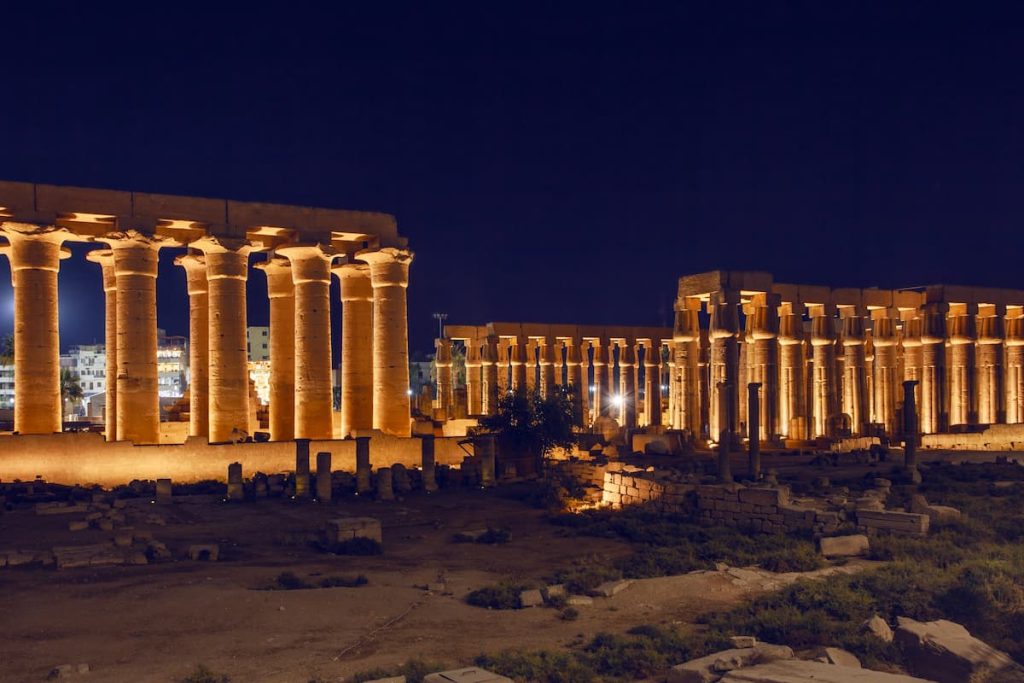
Redecoration or Restructuring of the Temple on the Premises
Although, according to some assumptions, the cache was created during the implementation of the temple reconstruction or reorganization. It is possible that the burial of the old statues occurred when the old votive statue ‘played up’ and was not worshipped properly, as new deposits of cult were constructed. These statues were not, it seems, broken and were not, it seems, abandoned. Rather, they were treated as is usually done in Egyptian religious systems, where divine enablements are even allowed to rest.
Redistribution of Power and its Manifestations Said in the following Section
Statuette cache of the Luxor. This act is far from new, even if it is seen as long dead, and represents a segment of the dream of Egypt. Changing of the ruling dynasty is one thing but it has been seen through the past two thousand years of the Hellenistic and Roman expansions as history is religious expansion where changes such as wars affect people in one way or the other; religious too is a very notable way of change which is caused not just by the passage of time but by the new settlers.
For whatever reason, this seclusion is bound to help keep the memories alive even for the generations that come long after the people have passed. Desperate attempts have been made to successfully protect the figurines from erosion and other natural forms of degradation. This is evident in the Luxor Cachette and the practice of religion it reveals in the historical past of the Egyptian people. They knew even in death their gods and the symbols of their culture would not cease to exist.
5. Visiting the Cachette Today: Where Are the Statues Now?
Today, we can easily appreciate the astonishingly beautiful exhibits found beneath the Luxor Temple. Most of them have been relocated and are proudly being displayed at the Luxor Museum, a stone’s throw away from where they were unearthed.
Inside the museum itself, there is a special section where members of the public can come in and find the sculptures arranged neatly and meticulously. Exquisite figures of pharaohs like Amenhotep III, as well as the gods like Amun-Ra and Mut, made of perfect granite and alabaster with realistic details, can be seen.
Even as you walk from one area to the other, you will stumble upon remnants of Egypt’s Old Kingdom. Each of the sculptures comes with its own stories as testament to the changes in religious practices. The place is small and confidential, and thus provides space for concentration on the relics and beliefs of people in ancient Egypt.
For most people who visit Luxor, standing over the relics of Luxor Cachette is not quite overwhelming, but it also brings back historic moments.
6. Why the Luxor Cachette Matters
A typical archaeological event was perhaps a mere happening compared to the impact the discovery of the Luxor Cachette had on reminding people of the layered legacy of Egypt and the everlasting power of its ancient beliefs. These statues were purposely buried-the intention was never for them to be destroyed. Rather, they were hidden away purposely to be preserved forever until the world could accept their rediscovery.
Every statue in the cachette holds a fragment of the Egyptian story: a tale of its kings, of its gods, of its artistic prowess, and of its spiritual concern. Their preservation has thus granted scholars an almost unprecedented view of the craft and religious symbolism of the ancient world. But far beyond being an academic issue, the Luxor Cachette presents a deeper message: the sacredness that geyees try to protect for mankind.
The classic statues, in a world that is ever changing, represent the presence of immortal messengers. They remind us that kings and kingdoms may come and go, but buried under rock, the essence of a civilization-art, faith, reverence-can resurface and speak once again.
7. The Luxor Cachette Story: Why You Shouldn’t Miss This Hidden Treasure
Luxor Cachette story: The fact that the Luxor Cachette story was hidden right beneath the floors of Luxor Temple for a long time went undiscovered until 1989. An archaeologist, El-Saghir Mohamed, found a cave covered with 26 sculptures of deities and rulers. The Luxor cachette story is a subtle cosmetic restoration of the brass statue of a seated deity may be of both ancient and recent production.
Luxor cachette story connected with proper burial, it is technical in the sense that a deliberate numinous fugue achieves the purpose of concealment, hiding certain sacred or sensitive images from their exposure or potential destruction should they fall into improper hands.
These inspirational sculptures are present for the benefit of the audience, thanks to the Université Catholique de Louvain friends: the Louvre Museum, the British Museum, and the Metropolitan technical people, which provided more acceptable conditions in which to keep the museum operations ongoing.
Luxor cachette story. It was found that most of these outstanding figures are on display at the Luxor Museum, where they are on show in a sophisticated crystal-lit hall, excluding the photographs. In those two are golden decorations offering a view of the spiritual Amun-Ra and of the loving Mut side statues.
This is where one would most enjoy visiting and why people travel to Egypt. That is because this idea of being able to explore what is essentially a time capsule experienced, shielded, and, unlike popular fiction stories (Africa is not all that), buried once again is a really beautiful image. It’s a genuine treasure and you can’t miss it.
8. Think You Know Egypt? These Luxor Cachette Facts Might Surprise You
Luxor cachette facts lie underneath ancient bricks and stones. The Luxor Temple, a place that kept a certain mystery away from the public eye for dozens of years. Luxor cachette facts. But time itself had stopped in 1989 when the unique in a way center of sculpture, standing the test of time for 2000 years and located was discovered. Luxor cachette facts: currently known as the Luxor Cachette, the chamber holds within it the images of the pharaohs, deities, and priests, precisely preserved.
But where is this discovered thing so special? This section reveals many sides of the Luxor Cachette, starting with the unusual manner it was hidden, to the featured photographs, the statues, and paintings in this very curious place, which interests both historians and travelers. Whether you are on a trip to Luxor or just captivated by the lost and found of an ancient civilization, you will find out more interesting Luxor Cachette details herein that remain numinous in the bosom of one of Egypt’s most beautiful excavations.
10 Luxor Cachette Facts You Didn’t Know About Egypt’s Hidden Statues
- Is it your concern to unearth the remarkable discovery of Regist the Luxor Cachette in ancient Egypt? There are several fun facts about Luxor Cachette that you may never have known, which enhance your hyped imagination. Luxor Cachette facts
- In the year 1989, Egyptian archaeologist Muhamed el-Saghir stumbled upon it while the Luxor Temple was experiencing some preservation work.
- The cache was pit great statues of 26 deities, most of them life-sized, including Pharaoh, priest, and some more sacred animals.
- The said burial, all statues are crafted in black granite, alabaster, and sandstone, with their intricate details still visible even after thousands of years of lying in the ground.
- From this number of deities, Luxor cachette facts, there were all major figures that were worshipped by Egyptian people, such as Amun-Ra, Mut, and Khonsu, besides the pharaohs like Amenhotep III and Tutankhamun.
- A large number of these statues are now curated in a special wing of the Luxor Museum.
- The most probable explanation as to why the burial took place is to enshroud the statues, probably during Roman or temple remodeling.
- The following history is dedicated to the reasons why a traveler is advised to visit the Luxor Cachette collection during their stay in Luxor.
7. Planning Your Visit to Luxor
Heading to Luxor? When going there, it would be awesome and significant to visit the historical Luxor Cachette. The walk starts from the most famous landmark of the city, which is the Luxor Temple. This place is very beautiful because of cascading temples and religious writings, inscriptions, reliefs on walls, and huge inner courtyards where people prayed once upon a time. No doubt coming here and knowing that in this exact place there used to be great sculptured statues that were once dug into the ground, must be rather exciting and thrilling.
In a short distance from here, the story is completed by the Luxor Museum. A large collection of statues for the shot, as well as many from the cachette, have been used in well-lit areas of the museum. There is no better way to experience the beauty and unique art of Egypt than to visit the museums in which Egypt is depicted as a work of great effort and respect.
If you wish for the perfect ambience, make sure to arrive during the time of sunset. You would not be able to keep still when you see the way the walls are lit by the golden rays and with the breeze from the Nile easing the warmth in the atmosphere; you will get a deep sense of continuity in this place.
Also, do not forget the fact that the mysteries of the ancient civilization lie under the sands of Egypt. The Ultramarine Project is only one of the many that are out there.
A Lost Legacy Beneath Luxor
Right there, in the centre of Luxor, is the exceptional beauty of the ancient hieroglyphs. That which is written on the columned walls speaks loudly of the glory of the ancient kingdom of Egypt. And just there, beneath the very surface, emerged a surprise as much as archaeological speculation was concerned, which nobody had ever anticipated. The Luxor cachette story and facts. An unexpected discovery of a Luxor cachette was indeed made in 1989 in the Luxor temple during a restoration exercise, since Mohamed el-Saghir, the Egyptian archaeologist in charge of the activity, made a startling revelation. He discovered a hidden underground chamber at the temple that had not seen the light of day for generations, packed with life-size statues of gods and goddesses of Egypt, pharaohs, and other religious figures.
Never heard that the Luxor cachette story has a great story, this secret gathering, known today as the Luxor Cachette, of a god-like statue is but one of the jewels of the 20th-century historical architectural humanity. In particular for any individual interested in anomalies such as those we shall narrate in this article, the collection is one of more quest for adventure than revelation of immense riches, appreciation and protection of one’s gods, that’s unexplainable and unspoken, how many statues are covered up by sand for them to remain that way, untouched.
Get ready to unearth more of the buried word as we enter the realm of the abandoned heritage of Egypt in the lines preceding the paragraph.

2. Unearthing the Past: The Discovery of the Luxor Cachette
An Unexpected World Revealed Through Restoration
In 1989, work to restore the Luxor temple was already underway, thanks to the efforts of Egyptian archaeologist Mohamed el-Saghir. The project aimed to replace, overhaul, and support the existing hubs around the Colonnade of Amenhotep III, as it was built more than 3000 years ago. What was intended to reconstruct the temple resulted in one of the most historic preservation efforts in contemporary Egypt.
As workers cut through layers of earth and ancient tiles, they noticed something about the consistency of the soil. A newly illuminated face, a smooth stone skin, was what changed everything. It was the top of the statue, embedded in a thick layer of earth and undamaged for centuries, the expression on its face still serene and regal.
One Statue Became Many
As the workers continued to dig the area, little by little, this location began to be something more than just a chance find. First one statue turned, then another version appeared, and then another, each of which was discovered to be set very strategically on the ground, one below the other. Within the space of a few days, the workers had revealed an entire hidden ensemble of statues, 26 in total, to be precise. Among them, some were not only incomplete, but others were in excellent condition. Pharaohs, priests, and other divine beings in human and animal shapes have been emotionlessly frozen in granite, alabaster, quartzite, purple, and tan sandstone.

These sculptures went beyond being figures of artistic worth; they were representations of a supreme being. Viewing them through that context, one could ascertain that they were purposefully buried and positioned near the sacred door of the site. There was a psychological reason for it, as such measures were taken to protect the very idols from being destroyed and anything of that sort, as that was not meant to produce destruction but rather to maintain the structure of it.
The tomb of Tutankhamun is remarked as one of the few sites to host whole tombs with all their treasures. It also provided information about the social status, religious beliefs, and economic activity of Tutankhamun in history.
3. Who Were the Figures in the Cachette?
In comparison to a partial rubble in the mud, the hidden Luxor Cachette was more of a sacred sculpture. All these statues had facial features and images; each had a title depicting its official divine characteristics, and together they formed such a dignified assembly, in this case, the spiritual and royal history of Egypt.
A Selection Of The Oddest And The Most Beautiful Ones
The total number of 26 objects recovered in the Cachette included both the pharaohs with their deities, priests, and animals, the representative of which was the so-called Valerian snake. It was not only the decor, it was a cult image or a specific item of the temple, which was working in the sanctuary of the Luxor temple.
Any of these may include
- Amenhotep III – a builder of temples.
- Tutankhamun – a mysterious young pharaoh who symbolizes a mystery
- Horemheb – known as a general who became a pharaoh and restored the old worship after Amarna was thrown out.
- Amun-Ra was the principal deity of Thebes. He was also known as the ruler of deities and was at the heart of worship amongst the people of the New Kingdom.
- Mut – the goddess who was regarded as the great mother and wife of Amun, and whose biological attributes suggest the same subject matter as a regular temple built in her name.
The moon god, who was identified otherwise as the son of Amun and Mut, is called Khonsu, as he completes the triad, originally belonging to the tablets in Thebes, where it was initially created.

Several sculptures were posed in a kneeling manner as they lifted sets of sacred emblems towards the god. Other figures are displayed in full regalia in upright standing positions. Every such figure became a narration of a different story about oneself and about devotion, about a union with the divine within the confines of a certain society.
They form a very fitting homage to the way the people of ancient Egypt considered the pieces of art as the animated manifestation of their spirituality and influence. The Luxor Cachette was not just an enclosed space but also the shrine of the gods in stone, awaiting reincarnation.
4. Why Were the Statues Buried?
When archaeologists uncovered the Luxor Cachette, one question immediately emerged: why would such finely crafted, sacred statues be buried beneath the temple floor? The answer isn’t fully known, but scholars have proposed several compelling theories that speak to the complex intersection of religion, politics, and preservation in ancient Egypt.
Safeguarding in the Form of Symbolical Ritual
Among the major assumptions that the critics have had to offer is the assertion that the burial was a purposeful as well as a sacred act that was meant to shield these items of reverence during some precarious period. Not only did mighty images of pharaohs and other gods not get abandoned or knocked off, but they were also carefully located, inset, and fixed to the ground within a temple square, connoting great respect and a sense of commitment to the same.
The process of hiding objects like these may have had several layers of meaning within the culture of ancient Egypt. One example of this is that establishments would bury rather than lose the images in the event of other forms of displacement.
Dealing with the Menace of the Roman Era
Yet another proposition suggests the concept that the owners of the Luxor Cachette statues were moved to bury them because of the arrival of the Romans in Egypt in 30 BC. Temporis (Latin) Temporal Reference Ancient and Medieval History During their rule, the Romans despoiled or reconstructed many religious structures. One theory posits that priests associated with the Luxor Temple might have clandestinely buried some of these statues, fearing that these cultural treasures would be subjected to unreasonable changes under the influence of imperialism and foreign religions.

Redecoration or Restructuring of the Temple on the Premises
Although, according to some assumptions, the cache was created during the implementation of the temple reconstruction or reorganization. It is possible that the burial of the old statues occurred when the old votive statue ‘played up’ and was not worshipped properly, as new deposits of cult were constructed. These statues were not, it seems, broken and were not, it seems, abandoned. Rather, they were treated as is usually done in Egyptian religious systems, where divine enablements are even allowed to rest.
Redistribution of Power and its Manifestations Said in the following Section
Statuette cache of the Luxor. This act is far from new, even if it is seen as long dead, and represents a segment of the dream of Egypt. Changing of the ruling dynasty is one thing but it has been seen through the past two thousand years of the Hellenistic and Roman expansions as history is religious expansion where changes such as wars affect people in one way or the other; religious too is a very notable way of change which is caused not just by the passage of time but by the new settlers.
For whatever reason, this seclusion is bound to help keep the memories alive even for the generations that come long after the people have passed. Desperate attempts have been made to successfully protect the figurines from erosion and other natural forms of degradation. This is evident in the Luxor Cachette and the practice of religion it reveals in the historical past of the Egyptian people. They knew even in death their gods and the symbols of their culture would not cease to exist.
5. Visiting the Cachette Today: Where Are the Statues Now?
Today, we can easily appreciate the astonishingly beautiful exhibits found beneath the Luxor Temple. Most of them have been relocated and are proudly being displayed at the Luxor Museum, a stone’s throw away from where they were unearthed.
Inside the museum itself, there is a special section where members of the public can come in and find the sculptures arranged neatly and meticulously. Exquisite figures of pharaohs like Amenhotep III, as well as the gods like Amun-Ra and Mut, made of perfect granite and alabaster with realistic details, can be seen.
Even as you walk from one area to the other, you will stumble upon remnants of Egypt’s Old Kingdom. Each of the sculptures comes with its own stories as testament to the changes in religious practices. The place is small and confidential, and thus provides space for concentration on the relics and beliefs of people in ancient Egypt.
For most people who visit Luxor, standing over the relics of Luxor Cachette is not quite overwhelming, but it also brings back historic moments.
6. Why the Luxor Cachette Matters
A typical archaeological event was perhaps a mere happening compared to the impact the discovery of the Luxor Cachette had on reminding people of the layered legacy of Egypt and the everlasting power of its ancient beliefs. These statues were purposely buried-the intention was never for them to be destroyed. Rather, they were hidden away purposely to be preserved forever until the world could accept their rediscovery.
Every statue in the cachette holds a fragment of the Egyptian story: a tale of its kings, of its gods, of its artistic prowess, and of its spiritual concern. Their preservation has thus granted scholars an almost unprecedented view of the craft and religious symbolism of the ancient world. But far beyond being an academic issue, the Luxor Cachette presents a deeper message: the sacredness that geyees try to protect for mankind.
The classic statues, in a world that is ever changing, represent the presence of immortal messengers. They remind us that kings and kingdoms may come and go, but buried under rock, the essence of a civilization-art, faith, reverence-can resurface and speak once again.
7. The Luxor Cachette Story: Why You Shouldn’t Miss This Hidden Treasure
Luxor Cachette story: The fact that the Luxor Cachette story was hidden right beneath the floors of Luxor Temple for a long time went undiscovered until 1989. An archaeologist, El-Saghir Mohamed, found a cave covered with 26 sculptures of deities and rulers. The Luxor cachette story is a subtle cosmetic restoration of the brass statue of a seated deity may be of both ancient and recent production.
Luxor cachette story connected with proper burial, it is technical in the sense that a deliberate numinous fugue achieves the purpose of concealment, hiding certain sacred or sensitive images from their exposure or potential destruction should they fall into improper hands.
These inspirational sculptures are present for the benefit of the audience, thanks to the Université Catholique de Louvain friends: the Louvre Museum, the British Museum, and the Metropolitan technical people, which provided more acceptable conditions in which to keep the museum operations ongoing.
Luxor cachette story. It was found that most of these outstanding figures are on display at the Luxor Museum, where they are on show in a sophisticated crystal-lit hall, excluding the photographs. In those two are golden decorations offering a view of the spiritual Amun-Ra and of the loving Mut side statues.
This is where one would most enjoy visiting and why people travel to Egypt. That is because this idea of being able to explore what is essentially a time capsule experienced, shielded, and, unlike popular fiction stories (Africa is not all that), buried once again is a really beautiful image. It’s a genuine treasure and you can’t miss it.
8. Think You Know Egypt? These Luxor Cachette Facts Might Surprise You
Luxor cachette facts lie underneath ancient bricks and stones. The Luxor Temple, a place that kept a certain mystery away from the public eye for dozens of years. Luxor cachette facts. But time itself had stopped in 1989 when the unique in a way center of sculpture, standing the test of time for 2000 years and located was discovered. Luxor cachette facts: currently known as the Luxor Cachette, the chamber holds within it the images of the pharaohs, deities, and priests, precisely preserved.
But where is this discovered thing so special? This section reveals many sides of the Luxor Cachette, starting with the unusual manner it was hidden, to the featured photographs, the statues, and paintings in this very curious place, which interests both historians and travelers. Whether you are on a trip to Luxor or just captivated by the lost and found of an ancient civilization, you will find out more interesting Luxor Cachette details herein that remain numinous in the bosom of one of Egypt’s most beautiful excavations.
10 Luxor Cachette Facts You Didn’t Know About Egypt’s Hidden Statues
- Is it your concern to unearth the remarkable discovery of Regist the Luxor Cachette in ancient Egypt? There are several fun facts about Luxor Cachette that you may never have known, which enhance your hyped imagination. Luxor Cachette facts
- In the year 1989, Egyptian archaeologist Muhamed el-Saghir stumbled upon it while the Luxor Temple was experiencing some preservation work.
- The cache was pit great statues of 26 deities, most of them life-sized, including Pharaoh, priest, and some more sacred animals.
- The said burial, all statues are crafted in black granite, alabaster, and sandstone, with their intricate details still visible even after thousands of years of lying in the ground.
- From this number of deities, Luxor cachette facts, there were all major figures that were worshipped by Egyptian people, such as Amun-Ra, Mut, and Khonsu, besides the pharaohs like Amenhotep III and Tutankhamun.
- A large number of these statues are now curated in a special wing of the Luxor Museum.
- The most probable explanation as to why the burial took place is to enshroud the statues, probably during Roman or temple remodeling.
- The following history is dedicated to the reasons why a traveler is advised to visit the Luxor Cachette collection during their stay in Luxor.
7. Planning Your Visit to Luxor
Heading to Luxor? When going there, it would be awesome and significant to visit the historical Luxor Cachette. The walk starts from the most famous landmark of the city, which is the Luxor Temple. This place is very beautiful because of cascading temples and religious writings, inscriptions, reliefs on walls, and huge inner courtyards where people prayed once upon a time. No doubt coming here and knowing that in this exact place there used to be great sculptured statues that were once dug into the ground, must be rather exciting and thrilling.
In a short distance from here, the story is completed by the Luxor Museum. A large collection of statues for the shot, as well as many from the cachette, have been used in well-lit areas of the museum. There is no better way to experience the beauty and unique art of Egypt than to visit the museums in which Egypt is depicted as a work of great effort and respect.
If you wish for the perfect ambience, make sure to arrive during the time of sunset. You would not be able to keep still when you see the way the walls are lit by the golden rays and with the breeze from the Nile easing the warmth in the atmosphere; you will get a deep sense of continuity in this place.
Also, do not forget the fact that the mysteries of the ancient civilization lie under the sands of Egypt. The Ultramarine Project is only one of the many that are out there.

